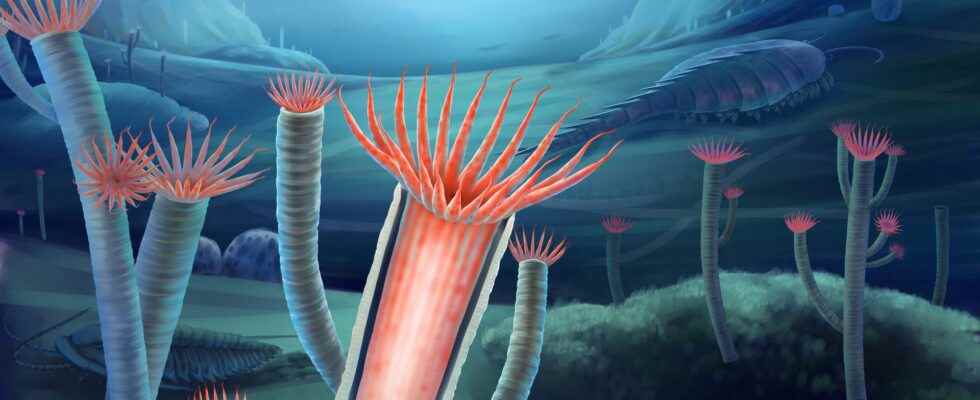The fossil remains from Yunnan that have now been found are different. They originated in an oxygen-poor environment, where there was hardly any bacteria that usually breaks down the soft tissue. Therefore, not only skeletal parts but also fleshy structures are preserved in them. These are the remains of four marine animals of the species Gangtoucunia aspera.
© Luke Parry and Guangxu Zhang, University of Oxford (detail)
witnesses of primeval times | In fossilized remains of the Cambrian creature Gangtoucunia aspera (left) the structures of skeletal parts and soft tissue have been preserved. Tentacles, mouth and intestines are visible (right, top to bottom).
As the fossil record shows, these creatures had a tubular shell attached to the ground, with a mouth protruding from the top. This was surrounded by a ring of five millimeter long, smooth, unbranched tentacles. The animals probably used it to catch prey – small arthropods, for example. Her intestine ended blindly, so it had no separate exit opening: the mouth was also an anus. It can also be seen that the digestive tract was divided longitudinally.
Gangtoucunia aspera thus possessed characteristics known from today’s cnidarians, which include jellyfish, sea anemones and corals. The similarity to umbrella jellyfish is particularly striking. In their larval stage, they form a so-called scyphopolyp – a polyp that is stuck to the ground and has a body, mouth, tentacles and a subdivided digestive space. In Cambrian animals, the mouth and wreath of tentacles protruded from the tubular body shell, but could probably be retracted in the event of danger. The shell itself was made of calcium phosphate, a mineral also found in modern-day teeth and bones.
